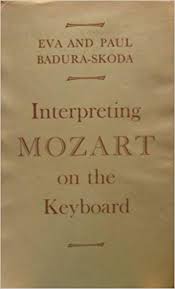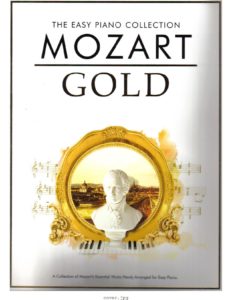Browse in the Library:
MOZART – Piano Concerto No. 21 In C ANDANTE K. 467 “Elvira Madigan” (Easy Piano Solo) with sheet music
Mozart’s Piano Concertos are some of the composer’s best works, and No. 21 is a particularly popular and virtuosic choice. Moreover, he himself gave the premiere.
Mozart was lucky enough to write almost all of his piano concertos to play himself. Indeed, the economics of living independently of him, almost at times itinerant as a songwriter and performer, meant that he was not only lucky enough to play them, but he was financially obligated to do so.
Mozart is largely responsible for the creation of modern piano concertos, composing them primarily for himself to support his career as a performer. His spending habits constantly put him in financial difficulty, and since he usually desperately needed to book, concerts were a natural solution.
He composed some twenty-three of them, beginning around 1767. Although his operas surpass his piano concertos in musical genius and historical significance, no other genre of his is so consistently high in quality and maturity.

While the concerto, which employs a variety of solo instruments or groups of solo instruments, had been a concert staple for more than a hundred years in Mozart’s time, it was the advent of the piano in the late 18th century that allowed that the genre reached its highest expressive possibilities.
The loudness and tonal weight of the piano alone really provides an equal partner for the orchestra, and thus a basis for the dramatic interplay between solo and accompaniment that is basic to the genre.
Mozart’s contribution, aside from his consummate musical genius, of course, was to ‘reinforce’ the role of the orchestra from mere accompaniment to that of co-star in the musical drama. He also established a clear succession of sections in the form of the first movement.
The famous Piano Concerto No. 21 (a staggering figure in itself: 21 piano concertos!) is one such, written in 1785, when he was only twenty-nine, just six years before his early death. . She is sometimes known as “Elvira Madigan”, after a now long-forgotten film that featured the work.
When he finished writing the piece, Mozart went through a period of unprecedented success and activity. He himself premiered the concert at a benefit concert at the National Court Theater in which he too, according to advertisements, did some of his famous improvisations. So great was Mozart’s memory for music, it was said that he could store at least two new complete symphonies in his head before he had to write them down.
W.A. Mozart
Wolfgang Amadeus Mozart (1756-1791) son of Leopold Mozart was born in Salzburg, being at that time his archbishop-prince Sigismund von Schrattenbach, who enjoyed the privilege of his temporal power, in addition to being the head of the Bavarian bishoprics. His own father acted as a teacher and very soon revealed his extraordinary gifts for music.

Realizing that he was a child prodigy, his father took him to Vienna in 1762 on a long tour, mainly to earn money. Received by Empress Maria Theresa herself at Schönbrunn, along with his sister and his father, it aroused great admiration.
In Salzburg, he had been appointed Michael Haydn conductor. The work for Mozart’s father was minimal, so he was able to undertake a long journey with his two sons through Europe. A tour that would last three years through Germany, Belgium, Paris and London. They started with a visit to Munich that continued with a tour of Germany, being able to listen to the famous Mannheim orchestra.
In October 1763 they arrive in Brussels without obtaining the desired financial support. From there they went to Paris where they stayed until mid-April 1764. This stay was of great importance for the young Mozart, as he came into contact with French culture and discovered the works of Johann Schobert who was established in Paris.
On April 10, the Mozart family left Paris to go to England, where they would remain until July 1765. In London, they did not achieve the expected success, Leopold also fell ill, and they had to retire to Chelsea to recover.
Before starting the description of Mozart’s symphonies, it is necessary to make, as in the case of Haydn’s, a clarification about their cataloging. To study the works of an author, it is very important to know the order in which they have been composed and their correct dating. With this, you can assess the influence of external events on the author and the evolution of his style. Mozart did not assign Opus numbers to his works and never cataloged them.
The first action that came to fruition in this field was carried out in 1862, when the botanist, mineralogist and educator Ludwig Ritter von Köchel (1800-1877) born in Vienna, published the catalog of Mozart’s works. The concept of numbering his works, in theory, was very simple.
The first work, a simple piece for harpsichord, was numbered 1 and the last, the unfinished Requiem, was numbered 626. Identification was easy KV 626, which means Köchel Verzeichnis Nº 626 or Köchel Catalog Nº 626. From the publication of the catalog five revisions have been carried out, the last one in 1964, being the sixth edition.
In the first edition, Köchel incorporated dubious works attributed to Mozart and other incomplete ones. In later editions, he corrected himself. Removing a number from the catalog is easy. The problem is when it is discovered that a work is badly dated. Their number does not correspond to the numerical order. Another problem occurs when new works are discovered. In this case they are placed in chronological order, among those that correspond, adding a letter in alphabetical order.
For example, “Symphony in D” KV 66c, means the third work between 65 and 67. The problem was solved. But when the dating date was changed, a new problem arose. Thus, the ‘Symphony No. 11 in D major’ KV 84 in the sixth edition of the Köchel becomes KV 73q. In our case, in order not to create confusion, we will use the original notations of the first edition. The solution is to put the two numbers, KV 84 / 73q. When the letters are finished, a second capital letter is used. Thus, the ‘Symphony No. 25 in G minor’ KV183 / 173dB.
Almost forty years have passed since the last edition and many changes have been made, but the new edition is under study, because it is becoming more and more difficult to carry out the new order. For this reason, the creation of a new catalog ‘Der neue Köchel’, simpler, starting from its origins, is being discussed.
